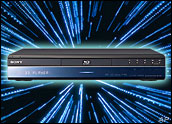
Sun Microsystems has locked down a US$44.29 million research deal with which it could develop a “macrochip” that speeds up ultra-complex computing processes through laser technology.
The Santa Clara, Calif.-based company has finalized a 5 1/2-year contract with the U.S. Department of Defense’s chief research and development agency — the Defense Advanced Research Projects Agency — that Sun says presents “a unique opportunity to develop supercomputers through interconnecting an array of low-cost chips, with the potential to overcome the fundamental cost and performance limits of scaling up today’s large computer systems.”
Combining unprecedented bandwidth, low latency and low-power interconnections this way could help create applications for an array of organizations to use in energy exploration, biotechnology and weather simulation, Sun said.
Yielding New Technologies
“The most significant bit here is when we — I mean the entire industry — build supercomputers, we feel constrained in data communications,” Ron Ho, distinguished engineer at Sun Labs and one of three researchers heading the project, told TechNewsWorld. “Schlepping all this data back and forth uses a lot of power.”
The researchers — Sun engineer Ashok Krishnamoorthy is principal investigator, assisted by Ho and John Cunningham, from Sun’s microelectronics group — hope to cut the power to transmit data by two or three orders of magnitude, Ho said.
The research also is likely to yield new technologies along the way, he added.
“The nature of research at an industrial company is that you set these long-term goals for long overarching projects and what comes out gets inserted in the product development line as you go along,” Ho noted. “The focus of the program is to make optical communication extremely efficient. If you think about people communicating using optics today, the focus has been getting data over long-haul communications paths, but power hasn’t been the focus. You need to get the power costs lower.”
The project is part of DARPA’s Ultraperformance Nanophotonic Intrachip Communication (UNIC) program and will begin with $8.1 million paid to Sun’s Microelectronics and Laboratories divisions.
“Currently, microprocessor chips have of the order of one billion transistors per square centimeter, and this number will increase over the coming years,” DARPA spokesperson Jan Walker told TechNewsWorld. “Facilitating communication between these ultrahigh density functional elements and the external world is becoming increasingly more difficult.”
The UNIC program will address this communications challenge directly and efficiently “at the chip level,” Walker said.
“By restoring the balance between computation and communications, the program will significantly enhance DoD’s capabilities for applications such as image processing, autonomous operations, synthetic aperture radar and supercomputing,” she added.
Lead to Cost Savings?
The technology can lead to an array of inexpensive chips working together like a single device and thus extending Moore’s Law — an idea of Intel cofounder Gordon Moore, who said that the number of transistors on a chip would double about every two years.
If the research is successful, it could lead to chips that allow companies to develop high-performance systems by combining cost-friendly processors that perform as one unit, Sun said.
It’s a good step, but it’s not an earth-shattering development, either financially or in terms of technological advancement, said Ashok Kumar, an analyst at CRT Capital Group.
“This might address the overall technological progression to a small degree, and the amount of dollars being spent on it is barely enough to move the needle,” Kumar told TechNewsWorld. “When industry research is measured in billions of dollars, $40 million isn’t that much. It costs hundreds of millions to develop a new generation of architecture.”
Not Uncommon
Other companies are working on cost-effective means to improve performance, Kumar noted. “This is not the ’90s, when the IT customers wanted the next best technology. Given the macro environment, there’s a lot of inertia in terms of the appetite out there for the next greatest process.”
It’s common for companies to build on industry standards, he continued. “They add their own technologies on top of that.”
However, the UNIC program will do that by showcasing high-performance photonic technology for high bandwidth, on-chip, photonic communications networks for microprocessors capable of 10 trillion operations per second, said Jag Shah, program manager in DARPA’s Microsystems Technology Office.
“By restoring the balance between computation and communications, the program will significantly enhance DoD’s capabilities for applications, such as image processing, autonomous operations, synthetic aperture radar, as well as supercomputing,” he added.




















































